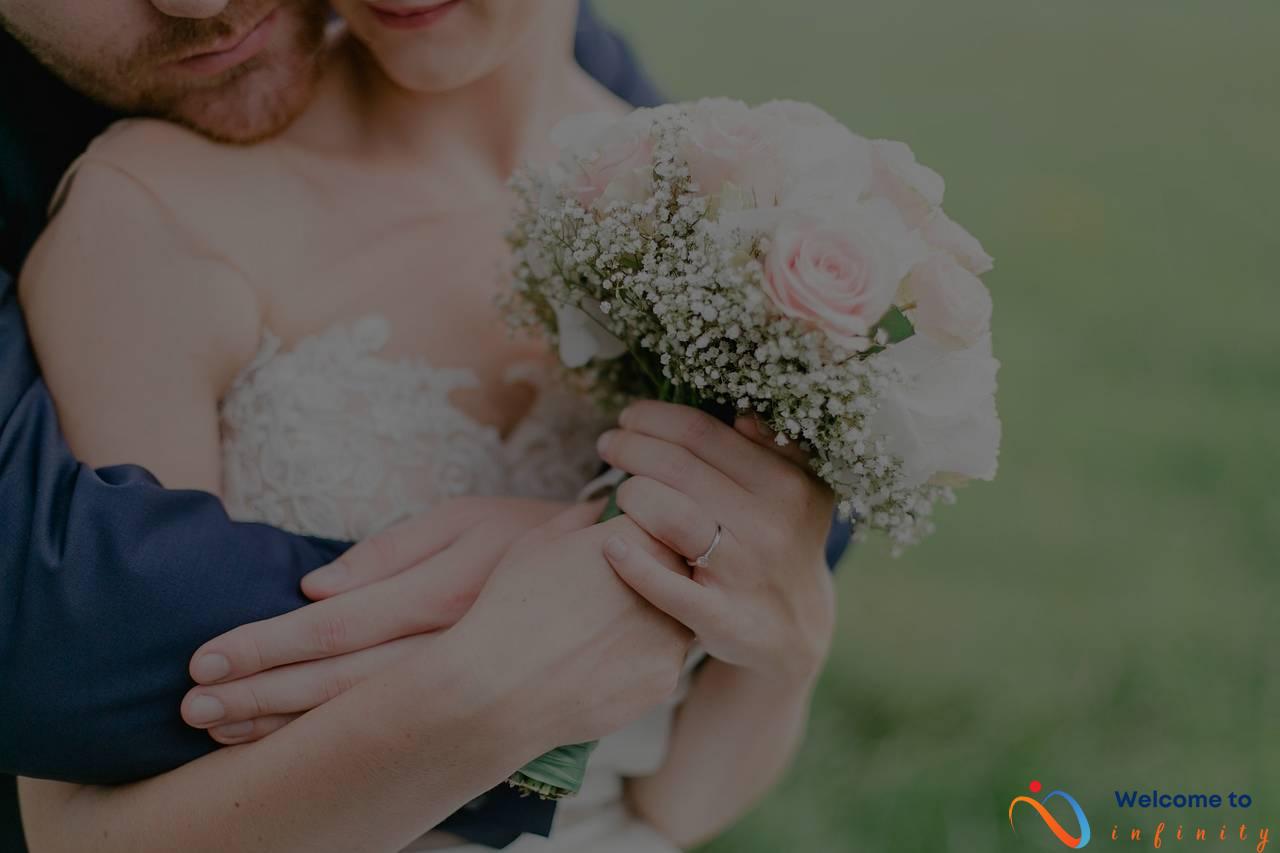If you're planning a multilingual wedding ceremony, it's important to consider the needs of all guests to ensure an inclusive and enjoyable event. With a bit of planning and preparation, you can create a ceremony that blends different languages and cultures seamlessly.
Start by choosing the right officiant who's experienced with multicultural ceremonies and can communicate in multiple languages. This will ensure that all guests can understand the key moments and feel included in the ceremony. Use portable translation devices to assist guests who do not speak the language of the ceremony. These devices provide real-time translation, allowing everyone to follow along.
another useful tip is to include translations of the ceremony program in multiple languages. This can help guests follow along with the ceremony and understand the significance of each ritual. Hire a professional translator to accurately translate the program and prevent any misunderstandings or confusion during the ceremony. Additionally, including pronunciation guides for frequently used phrases in the ceremony program can help guests feel more connected to the ceremony and prevent any mispronunciations.
Incorporating cultural traditions from both sides of the family can add a meaningful and memorable touch to a multilingual wedding ceremony. Research and plan cultural traditions ahead of time to ensure they are properly incorporated into the ceremony and respected by all guests. Discussing cultural traditions and incorporating input from family members can also help create a more representative and inclusive ceremony.
Finally, practice effective communication with all parties involved to ensure a smooth and successful multilingual wedding ceremony. By following these tips, you can create a ceremony that celebrates diversity and brings families together in a meaningful way.
choose the Right Officiant
Choosing the right officiant is paramount when planning a multilingual wedding ceremony. The officiant plays a crucial role in translating key moments and ensuring that all guests feel included. It's important to find an officiant who is fluent in all languages used in the ceremony and has experience working with multicultural weddings.
When choosing an officiant, consider their background and experience. Look for someone who has experience working with diverse families and has a deep understanding of cultural traditions. It's also important to find an officiant who is comfortable speaking in front of large groups.
If you're not sure where to start, consider asking for recommendations from your wedding planner or other vendors. You can also search for officiants online and read reviews from previous clients.
Remember that communication is key when working with an officiant. Be sure to discuss your expectations and needs for the ceremony, including any specific cultural or religious traditions you want to incorporate. And don't be afraid to ask questions and provide feedback throughout the planning process.
- Choose an officiant who is fluent in all languages used in the ceremony and experienced with multicultural weddings.
- Consider the officiant's background and experience before making a decision.
- Ask for recommendations and read reviews from previous clients.
- Communicate your expectations and needs with the officiant throughout the planning process.
Consider Translation Devices
For couples who have guests who speak different languages, using portable translation devices can assist them during the ceremony. These devices provide real-time translation, allowing everyone to follow along.
This technology has come a long way and can be rented from various companies. The rental cost is usually affordable, making it a great investment for a multilingual wedding ceremony. Providing translation devices to guests can leave them feeling valued and included.
It's important to test the devices beforehand and ensure they are working correctly. In some cases, it might be a good idea to have a technician present during the ceremony to help guests with any difficulties they may experience. Including instructions on how to use the devices in the program is also helpful for guests who may be unfamiliar with the technology.
- Tip: It's essential to have extra devices on hand in case of technical difficulties or additional guests who may need translation assistance.
Have Clear Programs
One of the most important aspects of a multilingual wedding ceremony is ensuring that all guests can follow along and understand the significance of each ritual. Having clear programs that include translations of the ceremony in multiple languages can be a great solution.
When creating the program, make sure to include translations of important phrases and any readings or speeches that will be given. You should also consider including a description of each ritual and its significance to help guests better understand the ceremony.
If possible, consider creating separate programs for each language to ensure that each guest can easily follow along. You could also design the program to be bilingual or include side-by-side translations.
Another option is to create a visual representation of the ceremony, such as a diagram or flowchart, to help guests understand the order of events.
To ensure that the translations in the program are accurate and effective, it is highly recommended to work with a professional translator. A professional translator can not only accurately translate the content but also ensure that important cultural nuances are not lost in translation.
By having clear programs with accurate translations, all guests can feel included and follow along with the ceremony, making it a memorable and meaningful experience for everyone.
Work with a Professional Translator
When it comes to a multilingual wedding ceremony, communication is everything. Hiring a professional translator to accurately translate the program can help prevent any misunderstandings or confusion during the ceremony. A professional translator can ensure that each guest understands the significance of each ritual and can follow along with the ceremony.
Working with a professional translator can also ensure that the translations are culturally accurate. For example, different cultures have different idioms and sayings, and a translator can ensure that these cultural nuances are properly conveyed.
It's important to work with a professional translator who is experienced in translating for wedding ceremonies and has a deep understanding of each language being used. This can help prevent any misunderstandings or mistakes that could potentially detract from the celebration.
If you're planning a multilingual wedding ceremony, consider hiring a professional translator to assist with the program and any other translation needs. This can help ensure that the ceremony is inclusive and enjoyable for all guests, regardless of their language background.
Include Pronunciation Guides
If you have guests attending your multilingual wedding ceremony who are unfamiliar with the language being spoken, it can be helpful to include pronunciation guides for frequently used phrases in the program. This can prevent any mispronunciations and help guests feel more connected to the ceremony.
You can create a separate section in the program for pronunciation guides. For example, if you are including a traditional ceremony ritual, write out the phrase phonetically, with emphasis on the correct syllables. It may also be helpful to include a short audio clip, demonstrating the correct pronunciation of the phrase in the language being spoken.
It's important to keep in mind that different languages may use different pronunciation guides. If possible, work with a professional translator to ensure that the pronunciation guides provided are accurate and appropriate for the languages being used in the ceremony.
Including pronunciation guides in your multilingual wedding ceremony program can help guests feel more at ease and connected to the ceremony, allowing for a more inclusive and memorable event.
Incorporate Cultural Traditions
Incorporating cultural traditions is a great way to add a unique touch to a multilingual wedding ceremony. When planning the ceremony, it's important to consider and incorporate traditions from both sides of the family to create an inclusive and meaningful experience for everyone.
One way to incorporate cultural traditions is by researching and planning ahead of time to ensure they are properly incorporated into the ceremony. This includes understanding the meaning behind each ritual and honoring traditions respectfully.
Additionally, discussing cultural traditions with family members and incorporating their input can help create a more inclusive and representative ceremony. This can also be a great way to involve family members in the planning process and make them feel included and valued.
Furthermore, incorporating cultural traditions can also be a great way to celebrate both families and their unique heritage. This can include traditional dress, music, dance, and other cultural elements that add a personalized touch to the ceremony.
Overall, incorporating cultural traditions can create a meaningful and memorable experience for all guests and help celebrate the diversity and heritage of both families. As with all aspects of the wedding planning process, communication and careful consideration are key to ensuring a successful and inclusive event.
Research and Plan Ahead
One of the key factors in ensuring a smooth and successful multilingual wedding ceremony is researching and planning ahead. This involves learning about and understanding the cultural traditions that will be incorporated into the ceremony. By doing so, you can ensure that these traditions are accurately represented and respected by all guests.
Researching and planning ahead also involves coordinating with family members and other vendors involved in the wedding, such as the photographer and caterer. It's important to communicate any special requests or needs ahead of time to ensure that everyone is on the same page.
- Make a list of cultural traditions that will be included in the ceremony
- Learn about the significance and history behind each tradition
- Coordinate with family members to ensure that traditions are accurately represented
- Communicate any special requests or needs with vendors ahead of time
By taking the time to research and plan ahead, you can ensure that all guests feel included and that the wedding ceremony is a meaningful and memorable experience for everyone involved.
Discuss with Family Members
Involving family members in the planning process of a multilingual wedding ceremony can help create a more inclusive and representative ceremony. Some families may have specific cultural traditions that they want to incorporate into the ceremony, or they may have suggestions on how to make the ceremony more welcoming to guests who speak different languages.
It's important to have open and honest communication with family members to make sure everyone's traditions and beliefs are respected. Take the time to listen to their ideas and incorporate them into the ceremony where possible. This will not only make the ceremony more meaningful and memorable, but it will also show that everyone is valued and included.
Creating a multicultural ceremony that is representative of both families can be an enriching experience, and it can help bring everyone closer together. Consider hosting a family meeting to discuss the ceremony and any concerns or ideas that family members may have. This can also be a great opportunity for family members to get to know each other better and learn more about their different cultural backgrounds.
Incorporating family traditions and ideas can also help create a sense of unity and cooperation between the families. It's important to remember that a wedding is not just about the couple, but it's also about bringing families together and creating a memorable experience for everyone involved.
A multilingual wedding ceremony is a beautiful celebration of diversity and love, and involving family members in the planning process can make it even more special. By discussing cultural traditions and incorporating everyone's input, you can create a ceremony that truly reflects the values and beliefs of both families.
Practice Communication
Effective communication is key to ensuring a smooth and successful multilingual wedding ceremony. It's important to establish clear lines of communication with all parties involved, including the officiant, vendors, and family members. Here are some tips for practicing effective communication:
- Schedule regular meetings with the officiant and vendors to discuss the ceremony details and any language needs
- Provide clear instructions for any translations needed, including the ceremony program and any speeches or readings
- Designate a point person for communication with guests who may have language needs or require translation devices
- Encourage guests to communicate any language needs they may have ahead of time so that accommodations can be made
By proactively addressing language needs and practicing effective communication, you can ensure that all guests feel included and that the ceremony runs smoothly. Don't be afraid to ask for help or clarification if needed, and be open to feedback from family members to create a more inclusive and representative ceremony.












